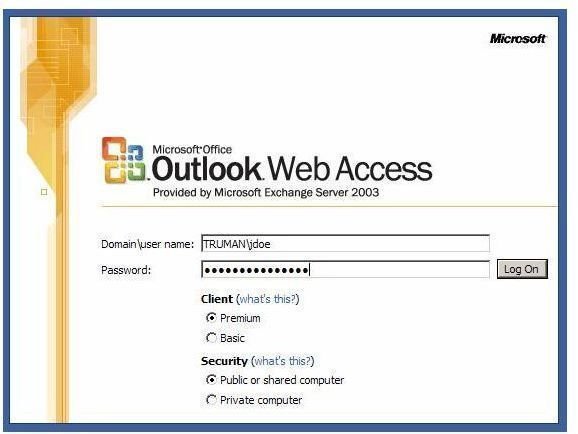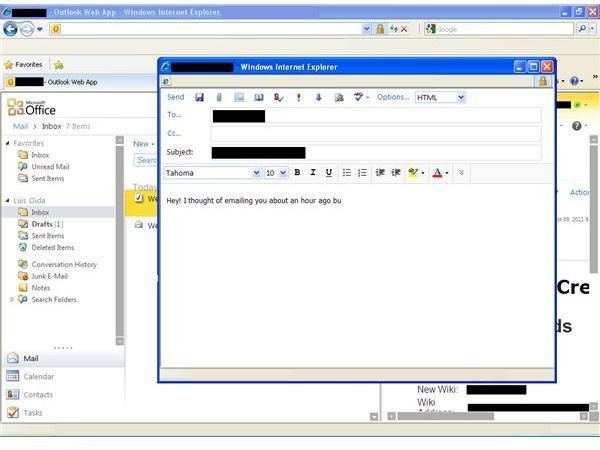How to Set Up Outlook Web Access
Outlook vs. Exchange - What’s the Difference?
Before I begin the guide on setting up Outlook Web Access, I want to clear up a little point of confusion that a lot of people will inevitably ask: What is the difference between Outlook Web Access, Outlook Web App, and Exchange Web Connect? A lot of these names are used interchangeably, and this causes a lot of disarray when people are trying to figure out which guides to use for which programs.
In order to make sure you don’t think you’re doing something wrong, allow me to just let you know that OWAccess, OWApp, and EWC are all the same application. Some of them are newer updates with different names (Outlook Web App is the newest), and some are older versions of Microsoft’s email client (Exchange Web Connect), but all of them are the same app that do relatively the same thing.
Now that that’s cleared up, let’s learn how to get the middle version–Outlook Web Access–set up so you can use it to its full potential.
Setting Up the Logon Page
Since OWA is automatically installed on any Windows machine using Office 2003 or later, the installation process won’t need to be detailed here. Instead, we’ll go over some tips you can use to get the most out of the app, starting with setting up your logon page properly, such as configuring how long your login info is saved before you’ll have to retype it. In order to do this, you’ll first need to enable forms-based authentication, which is done by doing the following:
- Firstly, log onto the OWA/EWC using an administrative account and go to the Exchange System Manager.
- Expand the “Servers” option, select the server you want to enable it for, and then expand the Protocols.
- Click the + next to HTTP, right-click Exchange Virtual Server, and then click Properties.
- Go to the settings tab, under the OWA panel, and check the box labeled “Enable Forms Based Authentication”
- Hit apply, and you’re good to go.
Next, all you have to do, going into the regular settings, is place the “Cookie Time-Out” time (found in the “Public or shared computer” settings) at whatever you like, and–violá, you are done. Additionally, you can (should you so desire) change some more settings by accessing client-side security, but that’s more complicated and I won’t be covering it in this tutorial.
Getting OWA to Work on a Slow Connection
If you have a slower internet connection, doing anything online can be a drag–quite literally, in fact. Microsoft saw this ahead of time and actually allows you to compress data that is getting sent to you when you setup Outlook Web Access. Once again, you can configure all of these in the Exchange Server, and there are three different choices of compression:
- None: This puts no compression on pages, and simply leaves everything as it is. Use this if you have a fast Internet connection.
- Low: The ’low’ setting will compress only static pages that you view, which is good for moderately slow Internet connections.
- High: This will compress both static and dynamic pages, and it best for the slowest Internet settings.
Hopefully this little trick will have things running a little more smoothly for you.
Getting a Shorter Exchange URL

As anyone who uses Exchange knows, Microsoft gives you URLs to direct people (and yourself) to your public folders and mailbox. Unfortunately, in the case of accessing your mailbox, they aren’t the easiest to remember or the quickest thing to type into your address bar because they follow this formula:
https:// server_name/exchange/mailbox_name
Now, this isn’t horrible if you’re able to bookmark it and then access it on the fly with a single click, but if you’re on a different computer and you need to get into your Access mailbox, are you really going to want to type in this long URL every single time? Probably not, so Microsoft included a way to get a shorter URL out of it and make things about twice as easy to work with. The best part is that it’s already been done for you.
When you’re normally typing in your mailbox URL, simply stop after the server name and hit enter. This will automatically redirect to the Exchange directory, which has a link to your mailbox embedded in the page. For example, if your normal URL would be “https://austinmac/exchange/mailbox1, simply type in https://austinmac, hit “Enter”, and you’ll automatically end up on the https://austinmac/exchange page. Pretty useful tool, eh?
Any Other Tools?
If you’ve played with all of the tools I’ve gone over already, unfortunately there isn’t much more that OWA can do. It’s a simple, straightforward, and easy-to-use email client that has a few nice features for cloud-based work, but ultimately it doesn’t serve the same purpose that the actual Outlook Express program would. If you have the option to use Express, I would go with that. If not, then Web App/Access provides a great and easy alternative–just don’t think you’ll be getting state-of-the-art technology alongside it.
References
- [Information] Author Knowledge
- [Image] Outlook Logon Page, http://its.truman.edu/Image/outlook_web_access/outlookLogon.jpg
- [Information] General Web Access Setup, http://technet.microsoft.com/en-us/library/aa998477%28EXCHG.65%29.aspx
- [Image] General Outlook Screenshot, http://upload.wikimedia.org/wikipedia/en/8/8a/Outlook_web_app.PNG
